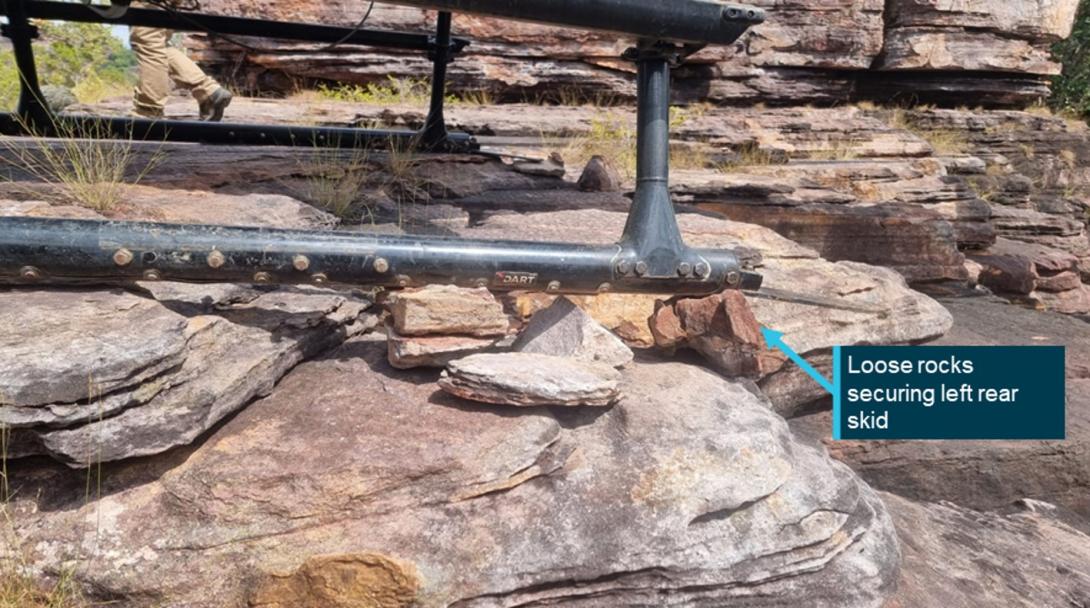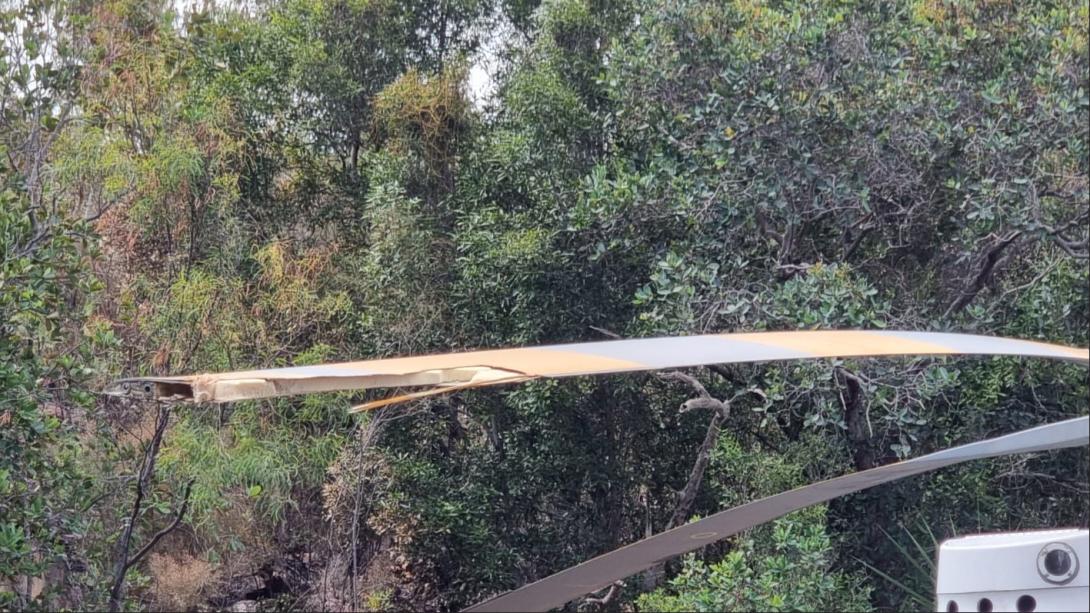What happened
On 1 June 2024, an Aerospatiale AS.350BA helicopter with a pilot and observer on board, was tasked to conduct a welfare search for some hikers in Kakadu National Park in the Northern Territory. The crew of 2 (pilot and crewman/spotter) had been briefed that 2 vehicles carrying up to 10 people had entered the park and were hiking in an area that had recently been burned as part of ongoing aerial incendiary operations.
The flight departed Jabiru Airport at 1516 local time, and the 2 vehicles and 6 hikers were located a short time later. The helicopter flew up a small valley to locate the additional hikers. Finding none, the decision was made to land and make positive contact with the hikers to determine if these 6 were the entire group or if there were others unaccounted for. The pilot identified an area on a rock shelf in a creek bed which they assessed as suitable for landing. A reconnaissance was carried out during a descending orbit, making a final approach into wind facing the nearby hikers.
Approaching the hover, the pilot noted a rocky outcrop to the right; assessing it to be far enough away to clear the main rotor the pilot then focused on the uneven touchdown area below. Just prior to touchdown there was a loud noise and a jolt followed by severe vibration. Realising that the main rotor had contacted the rock outcrop, the pilot manoeuvred the helicopter about 1–2 metres to the left and landed immediately.
The helicopter was shut down and the crewman instructed to exit once movement had stopped. The pilot then exited and, noticing that the helicopter began to rock backwards, stood on the right front landing gear skid while the crewman and hikers propped the left rear skid shoe with loose rocks to secure it (Figure 1).
There was significant damage to the helicopter tail boom and main rotor blades, as shown in Figures 2 and 3.
Figure 1: Secured left landing skid

Figure 2: Damage to the tail boom

Source: Operator.
Figure 3: Damage to the main rotor blade

Source: Operator.
Safety action
Following this accident, the company has implemented the following:
- Review of the company operations manual (COM) procedures for the selection, assessment, and use of unprepared helicopter landing sites.
- Develop a specific ‘GO – NO GO’ guidance tool for pilots to assess the urgency of landing against the complexity of the landing site available.
- Develop specific advice in the COM regarding acceptable distance and buffers from obstacles having regard to the nature of the obstacle (e.g. tall grass vs. trees vs. rocks) as well as varying capabilities and experience of pilots.
- Review of confined area sites used in training at the company offsite location to determine if these are adequately ‘complex’ to reflect those likely to be encountered operationally.
- Incoming pilots to receive practical refresher training based on this occurrence including crew resource management.
- The occurrence will be used as a flight training case study.
Safety message
This accident highlights the need to thoroughly assess the suitability of all landing sites and complete a 360° reconnaissance prior to landing. A full reconnaissance of the landing site probably would have allowed the pilot to make a better assessment of the height of the rock shelf and the limited size of the landing area.
About this report
Decisions regarding whether to conduct an investigation, and the scope of an investigation, are based on many factors, including the level of safety benefit likely to be obtained from an investigation. For this occurrence, no investigation has been conducted and the ATSB did not verify the accuracy of the information. A brief description has been written using information supplied in the notification and any follow-up information in order to produce a short summary report, and allow for greater industry awareness of potential safety issues and possible safety actions.


